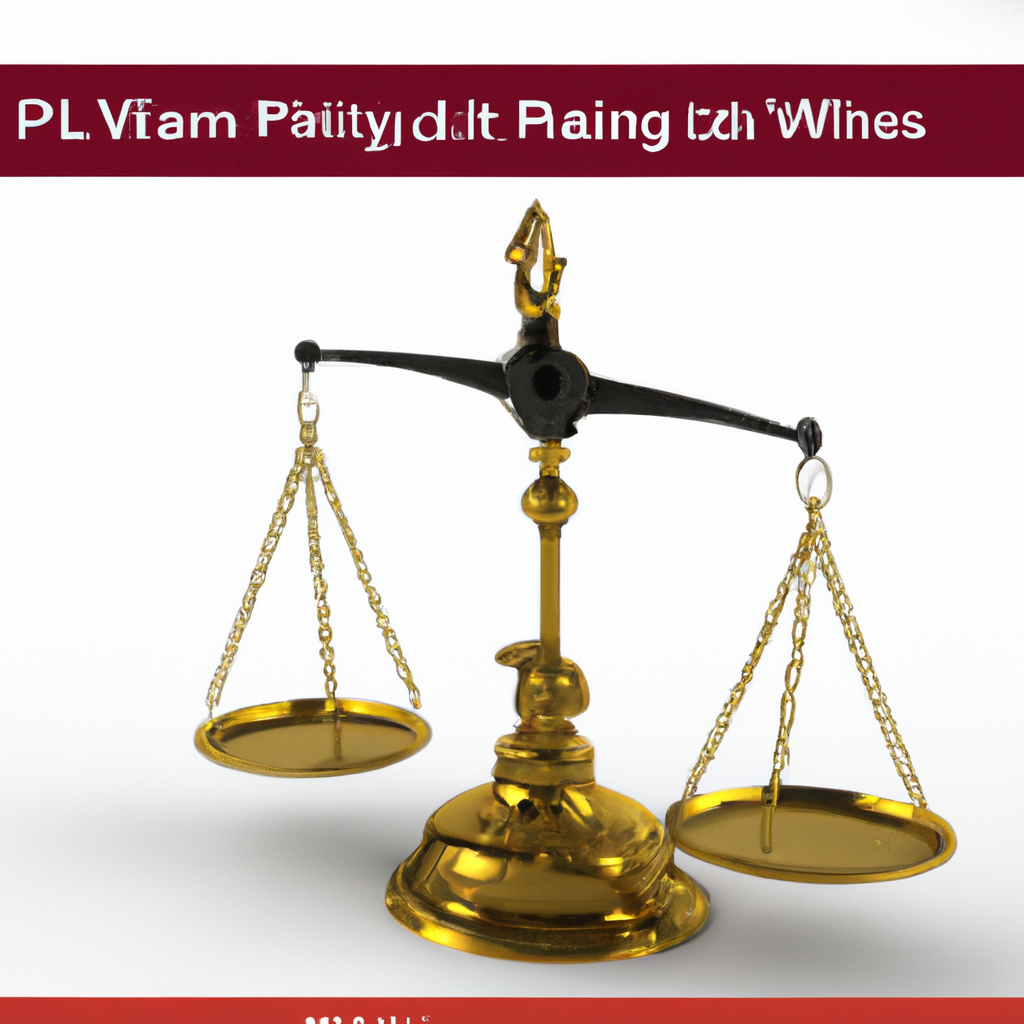So you’ve decided to start selling your products online, but you’re puzzled about these mysterious listing platform fees. What exactly are they? Listing platform fees are the charges imposed by online marketplaces for listing your products on their websites. In other words, it’s the cost you’ll have to pay to showcase your products to potential buyers and take advantage of the platform’s features. We’ll walk you through the ins and outs of listing platform fees, so you can make informed decisions for your online business.
What Are Listing Platform Fees?
Listing platform fees refer to the charges or costs that individuals or businesses incur when they use an online platform to list and promote their products or services. These fees are often charged by platforms such as e-commerce marketplaces, rental platforms, job listing sites, and other online marketplaces. Listing platform fees are a common aspect of many online business models and play a crucial role in the operation and sustainability of these platforms.

Definition of Listing Platform Fees
Listing platform fees encompass various charges levied by online platforms to enable individuals or businesses to list their offerings and attract potential customers. These fees typically cover the costs of platform maintenance, user support, marketing, and other operational expenses. The specific charges and fee structures vary between platforms, ranging from fixed fees per listing to percentage-based fees on transactions conducted through the platform.
Purpose of Listing Platform Fees
The primary purpose of listing platform fees is to ensure the effective functioning and profitability of online platforms. These fees allow platforms to generate revenue and sustain their operations, covering expenses such as platform development, server maintenance, customer support, and marketing efforts. By charging listing platform fees, online platforms can continue to provide a reliable and user-friendly environment for individuals and businesses to connect, buy, sell, or rent products and services.
Types of Listing Platform Fees
Listing platform fees can take various forms depending on the nature of the platform and the services it provides. Some common types of listing platform fees include:
-
Listing Fees: These fees are charged when an individual or business lists their products or services on the platform. They can be one-time fees or recurring charges based on the duration of the listing.
-
Transaction Fees: This type of fee is applicable when a sale or transaction occurs through the platform. It is usually a percentage of the transaction value and helps cover the costs associated with facilitating secure transactions.
-
Subscription Fees: Some platforms offer premium features or additional services to users, often for a monthly or annual subscription fee. These fees grant users access to enhanced visibility, marketing tools, analytics, or other value-added services.
-
Advertising Fees: Online platforms often provide advertising opportunities to sellers or businesses to enhance their visibility and reach a larger audience. Advertising fees cover the cost of promoting listings or sponsored content on the platform.
Factors Impacting Listing Platform Fees
Several factors influence the determination of listing platform fees. These factors may include:
-
Platform Type: The type of platform, such as e-commerce, rentals, or job listings, can influence the fee structure and pricing models. Each platform may have its own unique set of requirements and costs to consider.
-
Market Conditions: The prevailing market conditions, including supply and demand dynamics, competition, and customer preferences, can influence the level of listing platform fees. Platforms may adjust their fees accordingly to remain competitive and attract sellers or customers.
-
Geographic Factors: Listing platform fees can vary based on geographical regions or countries. Factors such as market size, local regulations, and operating costs can impact fee structures.
-
Listing Characteristics: The characteristics of the listings themselves, such as the type of product or service, its perceived value, and the average transaction volume, can influence the associated fees. Platforms may charge higher fees for higher-value products or services.
-
Seller Reputation and Performance: Some platforms may consider the seller’s reputation, performance metrics, or sales volume when determining fees. Established sellers with a track record of success may receive preferential fee arrangements.

Importance of Listing Platform Fees
Listing platform fees play a vital role in the sustainable operation of online platforms and provide several important benefits:
-
Revenue Generation: Listing platform fees are a significant source of revenue for online platforms. They allow platforms to cover their operational costs, invest in technological advancements, and expand their services.
-
Platform Maintenance and Development: The revenue generated from listing platform fees ensures continuous platform maintenance and development. This includes implementing security measures, enhancing user experience, and regularly updating software to address any technical issues.
-
Customer Support and Satisfaction: With the funds generated through listing platform fees, platforms can invest in top-quality customer support services. This improves user experience, strengthens customer satisfaction, and fosters trust in the platform.
-
Marketing and Promotion: Listing platform fees fund marketing and promotional activities that enhance platform visibility, attract more users, and drive traffic to sellers’ listings. These efforts significantly benefit sellers by increasing the chances of their offerings being discovered by potential customers.
-
Quality Control and Verification: Charging listing platform fees enables platforms to enforce quality control measures, such as verifying user identities or conducting background checks. This helps create a safer environment for buyers and sellers, reducing the risk of fraudulent activities.
Comparing Listing Platform Fees
When considering selling or listing items on online platforms, it’s essential to compare and evaluate the various listing platform fees. Different platforms may have different fee structures, fee ranges, or fee waivers depending on factors like platform reach, audience, and specific features offered. Conducting a thorough comparison allows you to make an informed decision and choose a platform that aligns with your business goals and budget.
Factors to consider while comparing listing platform fees may include:
-
Fee Structure: Compare how the fees are structured on different platforms. Some platforms may have a flat fee per listing, while others may charge a percentage of the transaction value.
-
Additional Services: Assess whether the platform offers any additional services or premium features for an extra fee. These services can enhance your visibility, provide marketing tools, or offer useful analytics.
-
Visibility and Audience Reach: Evaluate the platform’s reach and the size of its user base. Platforms with a larger user base may justify higher fees due to the increased potential for sales and exposure.
-
Industry Fit: Consider whether the platform caters to your specific industry or target audience. Some platforms may specialize in certain product categories or cater to niche markets, making them more suitable for certain types of listings.
-
Seller Support: Investigate the level of support offered to sellers, including customer service, dispute resolution, and seller education resources. Platforms with robust seller support mechanisms may provide greater value for the fees charged.
Benefits of Listing Platform Fees
Listing platform fees offer several benefits to both sellers and buyers:
-
Access to a Wider Audience: By paying listing platform fees, sellers can tap into the platform’s existing user base and significantly expand their reach. This widens their pool of potential customers and increases the chances of successful sales.
-
Marketing and Promotion: Listing platform fees often cover marketing and promotional activities conducted by the platform on behalf of sellers. This can include targeted advertising, search engine optimization, or email marketing campaigns. Such initiatives can greatly increase a seller’s visibility and attract more buyers.
-
Technical Infrastructure: The revenue generated from listing platform fees helps platforms maintain robust technical infrastructure, such as secure payment gateways, inventory management systems, and mobile applications. These features simplify the selling process for sellers and enhance the overall user experience for buyers.
-
Transaction Security: Platforms invest in secure payment systems and fraud prevention measures using the funds generated from listing platform fees. This helps protect both buyers and sellers from potential fraudulent activities and ensures secure transactions.
-
Enhanced Credibility: Sellers who list their products or services on established online platforms gain credibility in the eyes of potential buyers. Being associated with a reputable platform can instill trust and confidence in buyers, facilitating successful transactions.
Challenges Associated with Listing Platform Fees
While listing platform fees bring numerous benefits, there are also some challenges to consider:
-
Cost Considerations: The fees associated with listing platforms can be a significant expense for sellers, particularly for small businesses or individuals with limited budgets. It is crucial to carefully evaluate the potential return on investment before committing to paying listing platform fees.
-
Fee Transparency: Some platforms may have complex fee structures that are not straightforward or transparent, making it challenging for sellers to understand the exact costs associated with listing their items. Lack of fee transparency can lead to surprise charges or unexpected deductions, impacting profitability.
-
Fee Competition: Depending on the industry or product category, sellers may face fierce competition on listing platforms. Higher fees can act as a barrier for some sellers to enter the market or maintain competitiveness in the long run.
-
Platform Dependence: Relying heavily on listing platforms as a primary sales channel can pose risks for sellers. Changes in platform policies, fee structures, or algorithms can significantly impact a seller’s sales and profitability. Diversification across multiple platforms or sales channels can mitigate these risks.
Negotiating Listing Platform Fees
While negotiating listing platform fees may not always be possible, there are certain instances where sellers can explore their options:
-
High-Volume Sellers: Sellers who generate substantial sales volumes on a platform may have more leverage to negotiate better fee arrangements. Platforms may be willing to offer reduced fees or exclusive benefits to retain and incentivize these sellers.
-
Premium Features: If a platform offers premium features or additional services for an extra fee, sellers can negotiate to include these services in the standard fee structure. This can provide greater value for the fees paid and enhance the seller’s overall experience on the platform.
-
Long-Term Commitments: In some cases, platforms may be open to negotiating lower fees for sellers who commit to long-term listing arrangements. This can be beneficial for sellers with a stable and consistent stream of products or services.
-
Bundled Packages: When negotiating listing platform fees, sellers can explore the possibility of bundled packages that include multiple services or enhanced visibility options for a discounted fee. This can provide cost savings and additional exposure for sellers.
Tips for Reducing Listing Platform Fees
To minimize listing platform fees without compromising on the benefits, consider the following tips:
-
Evaluate Alternative Platforms: Explore different listing platforms to find the ones that offer competitive fee structures and align with your business needs. Compare their reach, pricing models, and additional services to make an informed decision.
-
Optimize Listings: Enhance the quality and visibility of your listings to maximize sales and minimize the impact of fees. Utilize attractive product images, detailed descriptions, and relevant keywords to improve search rankings and attract potential buyers.
-
Monitor Performance Metrics: Continuously track your performance metrics, such as conversion rates, customer reviews, and sales volume. Platforms may offer fee discounts or incentives to high-performing sellers, providing an opportunity to reduce listing platform fees.
-
Leverage Social Media and Blogging: Supplement your presence on listing platforms with social media marketing and blogging. By driving traffic to your listings through these channels, you can potentially reduce reliance on platform-generated sales, minimizing associated fees.
-
Negotiate Bulk or Package Deals: If you have a high volume of products or services to list, negotiate with the platform for reduced fees on bulk listings. Platforms may be open to offering customized packages or special discounts based on your unique requirements.
In conclusion, listing platform fees are an integral part of online platforms and serve a crucial purpose in facilitating buying and selling activities. These fees enable platforms to cover operational costs, invest in technology and marketing, and provide a secure and user-friendly environment. By understanding the types, factors, and challenges associated with listing platform fees, sellers can make informed decisions, negotiate beneficial arrangements, and optimize their overall profitability on these platforms.
